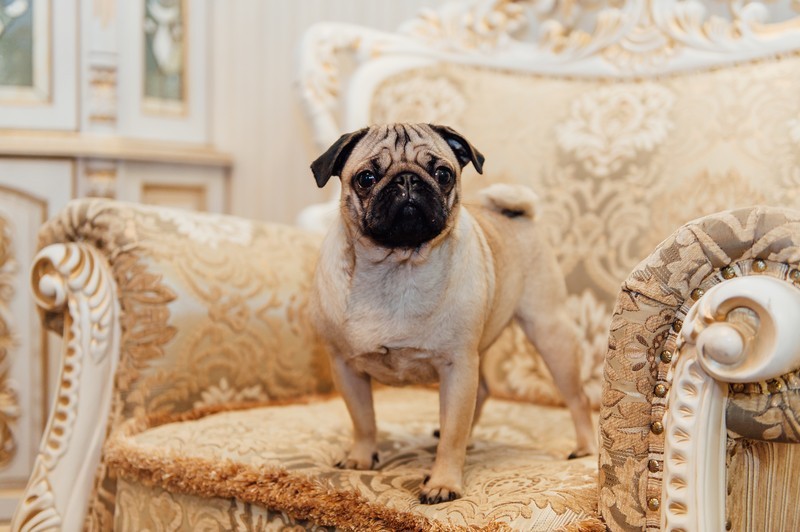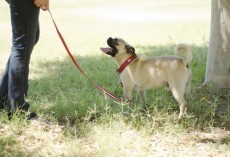Caring for your new pooch from the moment you take her home is crucial! A new puppy has a lot to get used to and you can help. Find out how to make your doggy's homecoming even easier. These tips will really help!
One of the biggest mistakes you can make is to bring a puppy home without a plan in place for training and socialization. The window of opportunity is short, as by 6 months of age your dog is already entering the juvenile stage and beginning to adopt the behavioral patterns he’ll depend on as an adult.
1. Expose Your Puppy to a Variety of Situations
Letting your puppy explore and experience different sights and sounds is known as “socialization.” From about 3 or 4 weeks of age up until about 16 weeks, all of the experiences your puppy has can leave a lasting impact, so try to make them positive.
You can also bring your puppy with you to pet-friendly shops or restaurants or sign him up for a puppy play class. A “play date” with a friend’s trusted dog can work well too, as long as you introduce the dogs carefully.
2. Leave Your Puppy Alone Sometimes to Prevent Separation Anxiety
When bringing a new puppy home, I recommend you take time off work, clear your schedule and plan to spend a few days or up to a week dedicated to making the transition to your home successful. Puppies need constant care and attention and shouldn’t be left alone for long periods.
3. Start Housetraining Right Away
From the second you get home, begin to teach your puppy where the appropriate place to potty is. There are three keys to successful housebreaking, no matter what your dog's age:Consistency
Positive reinforcement
Patience4. Provide Your Puppy With Chew Toys
Puppies love to chew, and new owners often become frustrated when their puppy decides to chew on shoes, clothing, furniture and other items that should be off-limits. You can avoid such mishaps by controlling your puppy’s environment (keep him in a gate area, on a leash clipped to your belt or under your direct supervision at all times in the beginning).
5. Try Positive-Reinforcement Training
It’s important to teach your dog good manners, but be sure to do so using positive reinforcement, not punishment. The use of choke collars and other forms of punitive behavior training can harm your dog, physically and emotionally, and damage the bond between you.
Come up with short, preferably one-word commands for the behaviors you want to teach your pet.
Make sure all members of your family consistently use exactly the same command for each behavior.
As soon as your dog performs the desired behavior, reward him immediately with a treat and verbal praise. Do this every time he responds appropriately to a command.
Keep training sessions short and fun.6. Make Learning Fun
Your dog should be excited when it’s time for learning, and this will happen naturally when you incorporate a happy voice, toys, play and treats into your training sessions.
7. Teach Your Puppy to Come When Called
Teaching this command should be a positive experience. Avoid calling your dog and then doing something he perceives as negative, like cutting his nails or giving him a pill. Instead, command him to come and then praise him, reward him and play a fun game (like chasing you around your yard, fetch or tug-of-war).
8. Teach Your Puppy That Human Touch Feels Good
If your pet is used to human touch, he may not need to be physically restrained at the veterinarian for blood draws or routine exams, for instance. You can start this process at home by petting your puppy and then rewarding him with a healthy treat. As his comfort levels with being touched grows, move on to other areas of his body, like his paws, ears and stomach. Provide treats and positive reinforcement and stop if your pet pulls away.
9. Take Your Puppy on Car Rides
Part of properly socializing your puppy should include trips in the car. He may associate your vehicle with leaving his mom and littermates, or he may be afraid of the noises involved or even have motion sickness, so taking your puppy on short trips and making the car ride fun (with chew toys, for instance) will help him to associate car rides with something positive instead of negative.
10. Earn Your Puppy’s Trust
It’s your job to protect and advocate for your puppy. In time, he will learn that he can trust you and this is part of the powerful human-dog bond.
“You have an obligation to be your dog’s advocate, and not allow anyone, no matter who they are, to do things to her that go against your gut instincts about how she should be treated.
If you are committed to force-free, fear-free, and pain-free handling and training, don’t ever let anyone talk you into treating her badly. No leash jerks, no collar shocks, no alpha rolls. Ever. Stick to your guns; there is always another way. If your animal care and/or training professional insists that the use of pain or force is necessary, find another one.”
Following these tips can make all the difference for you and your new pooch. In no time, you two will be having amazing adventures together!
For more information on puppy advice, visit Healthy Pets.











Walther Buenavista
- Edit
Patricia Z. Collantes
Lonnie Davenport
- Edit
Might as well give in immediately, and save all of the little concessions to come over a period of weeks!